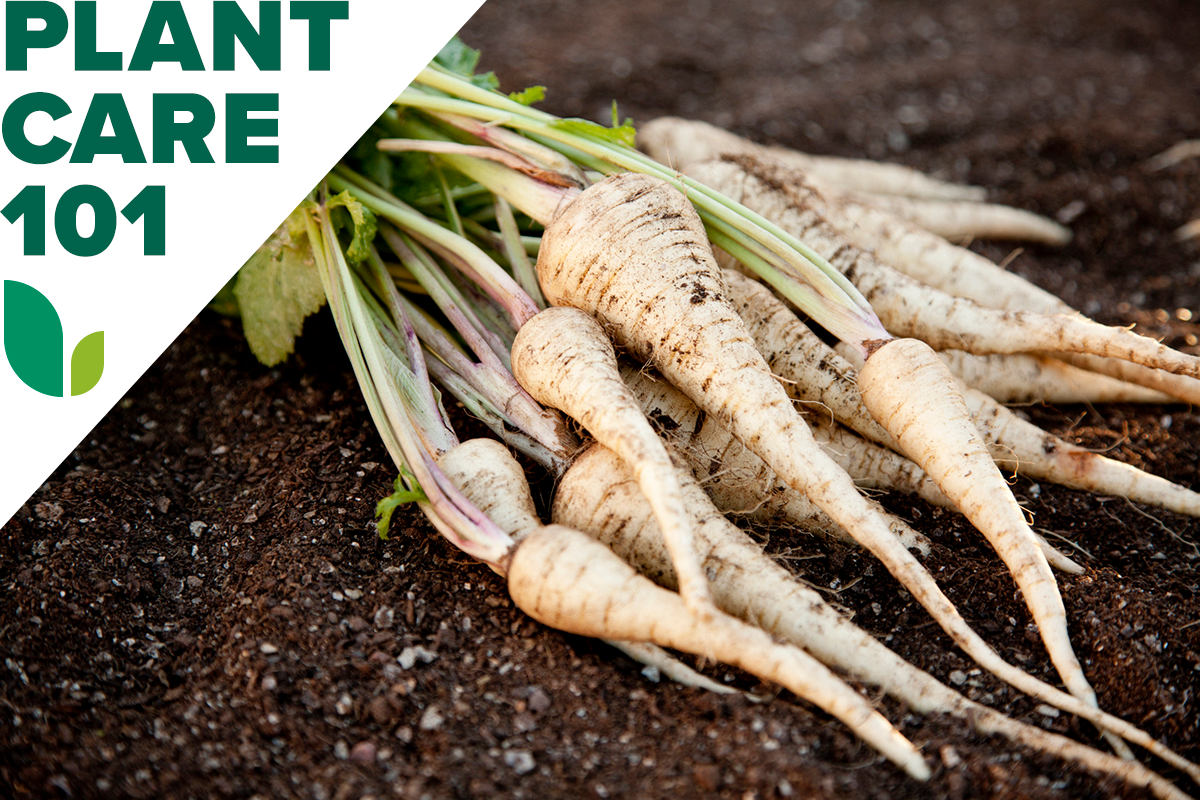We may earn revenue from the products available on this page and participate in affiliate programs. Learn More ›
Parsnips are a nutritious root vegetable that resemble a carrot—and are, in fact, related to carrots. These slow-growing veggies with cream-colored flesh and long, tapered roots have been popular since Roman times due to their sweet, nutty, almost licorice-like flavor. They’re also a low-calorie source of fiber, vitamins, and minerals, as well as antioxidants that support the immune system and boost weight loss.
If you don’t know how to grow parsnips, take note that they can be rather challenging to cultivate, tending to be a bit more difficult than their relative, the carrot.
Growing Parsnips at a Glance
Common Name: Parsnip
Scientific Name: Pastinaca sativa L
Hardiness Zone: 2-9
Soil: Well-drained, loamy; pH 5.5-7
Light: Sun or part shade
Water: Consistent watering, up to 2 inches per week
Food: Little, if any; side-dress fertilizer in rows
Safety: Wild parsnips are toxic; otherwise, minimal skin reaction
Parsnip Characteristics
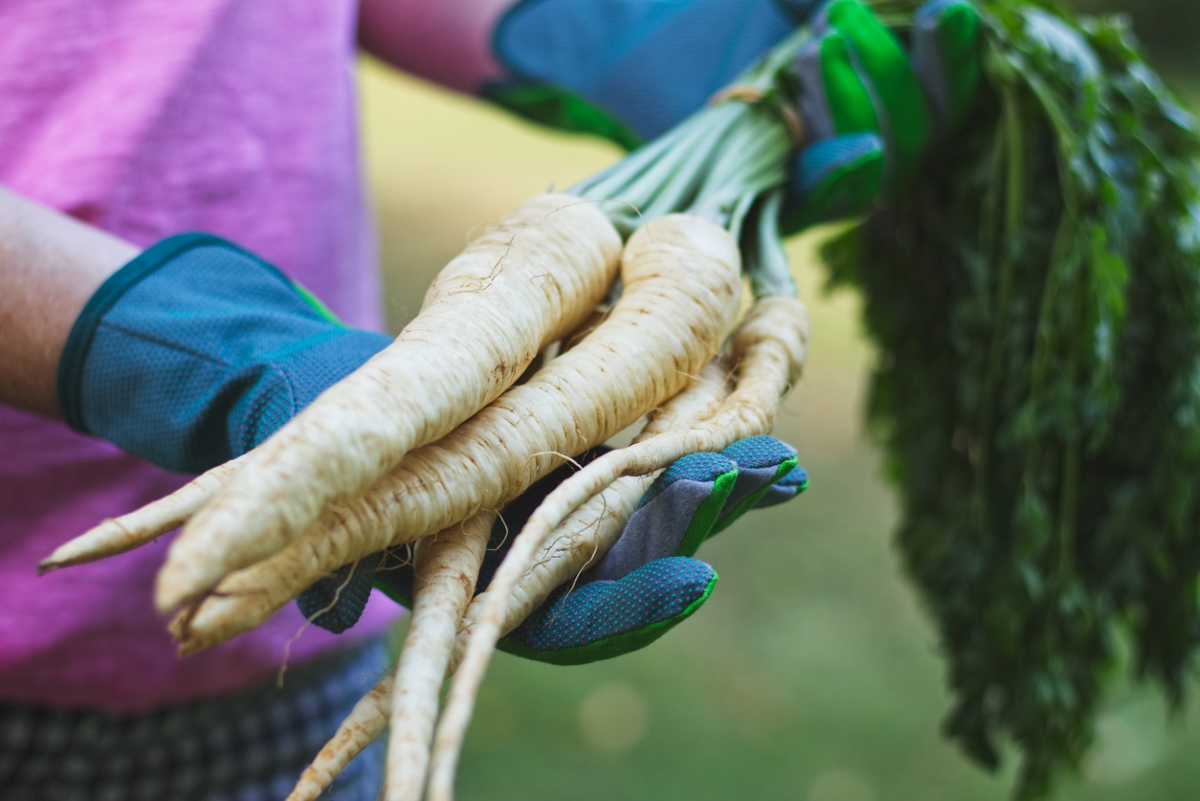
Like carrot, parsnip is a biennial root vegetable typically harvested in its first year. The cream-colored, carrot-shaped root veggie was first cultivated in the Mediterranean, but was popularized—and spread—by the Romans…so much so, in fact, that a wild version now populates much of the U.S.
Pastinaca sativa L, better known as the humble parsnip, is part of the Apiaceae family, which includes carrots and parsley. Used as a sweetener by Europeans before sugarcane was available, the parsnip is sweeter when cooked, but has a nutty, peppery flavor not shared by carrots.
Parsnip plants resemble broadleaf parsley in their notched or serrated foliage, but underground, their roots look more like their other relative, the carrot. Not only is this a cool-season crop, it is also a slow grower, but flavor improves after a light frost, so a longer growing season is acceptable.
Recommended Parsnip Varieties
More than a dozen parsnip varieties are recognized in Europe and North America. Those with short tap roots tend to be better suited to heavy, clay, or rocky soil, but selection can also be determined by disease resistance and flavor.
- Harris Model: A short-root variety, featuring tapered, 10-inch white roots Its flavor is one of the most popular.
- Kral Russian: An heirloom variety suitable for shallow or heavy soil, it grows a round root that offers tender, sweet white flesh known for superlative flavor.
- Hollow Crown: This 12-inch white parsnip matures earlier than other varieties (105 days) and produces tasty, mild, sweet veggies with long storage life.
- Albion: The long (up to 18 inches), thin, extremely white roots mature more slowly (120 days).
- Gladiator: A disease-resistant variety with hollow crowns, this sweet, slow-maturing parsnip has a long shelf life.
- Javelin: With some of the longest roots and slowest maturity (110-120), this high-yielding variety is one of the most popular due to its pleasing flavor and resistance to disease.
- All-American: Large, sweet, earthy roots with high sugar content that grow up to 12 inches long and 3 inches wide in just 95 days makes this variety suitable for shorter growing seasons and a long storage life makes it one of the most popular types.
Planting Parsnips
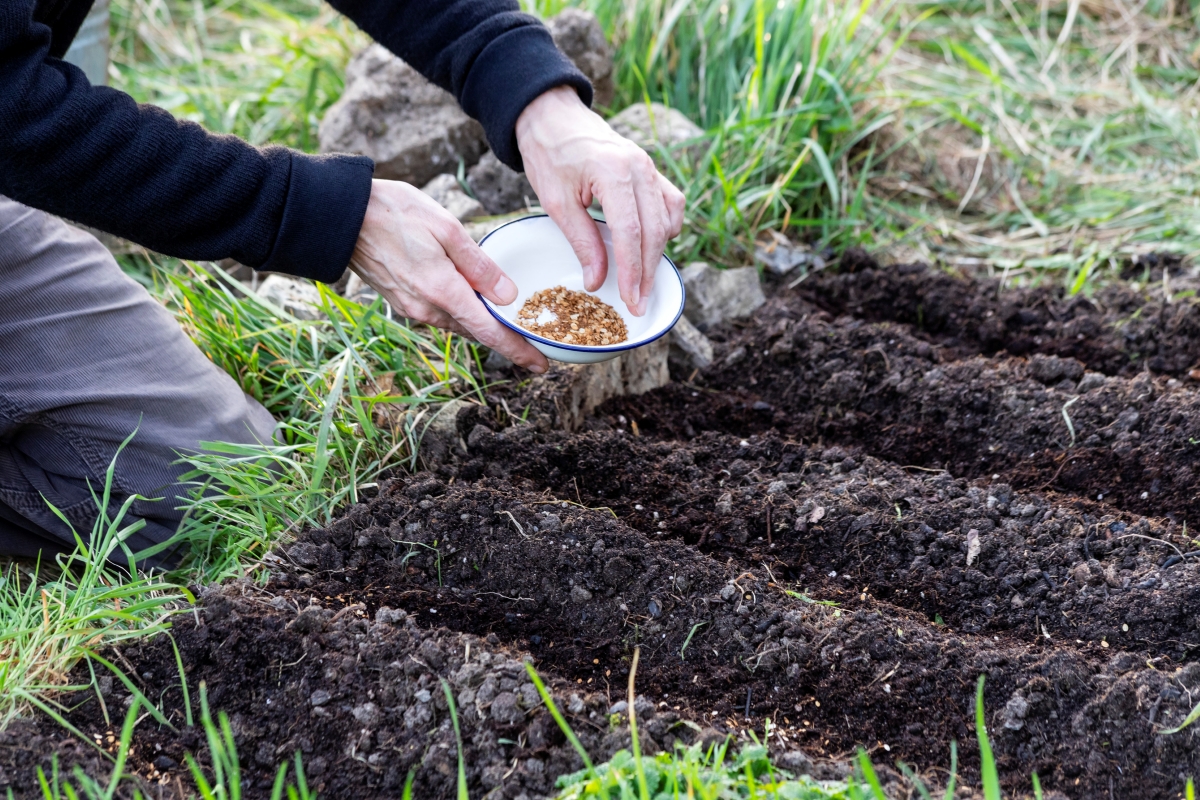
If you’re ready to start growing parsnips, keep in mind that the process isn’t much different from growing other root crops—particularly carrots. Once established, they’re fairly low-maintenance garden vegetables, but getting started can be tricky and depends on the right seeds planted at the right time.
When is the best time to plant parsnips?
Due to the long growing season, it’s best to start planting parsnips once daytime temperatures are a consistent 50 degrees Fahrenheit. Seeds struggle to germinate once temperatures top 80, so it’s best to direct-sow in the garden early in the spring, as soon as the soil is workable and while moisture levels are consistent. Even under the best conditions, they can take up to 3 weeks to sprout.
Where can parsnips grow?
Parsnips should be grown outdoors in sandy, sandy loam, or rich, loamy soil with good drainage—ideally, in raised beds. Although their long taproots can break up some clumps and loosen clay soil to some extent, if the soil is too heavy or rocky, heavy clay, or hard and compacted, roots will struggle to develop, or will grow crooked and misshapen. They will benefit from soil amended with compost.
How do you plant parsnips?
Direct-planting parsnips from seed is recommended, as parsnip seedlings do not transplant well. Always use fresh seeds; seeds over a year old have a low germination rate.
- Sow seeds ¼- to ½-inch deep and 1 inch apart in rows spaced 18 to 24 inches apart.
- Cover with a thin layer of compost or sand.
- Keep the ground moist to enable sprouts to break through the dirt.
- Thin to 3 to 6 inches apart as the seedlings grow.
Watering Parsnips
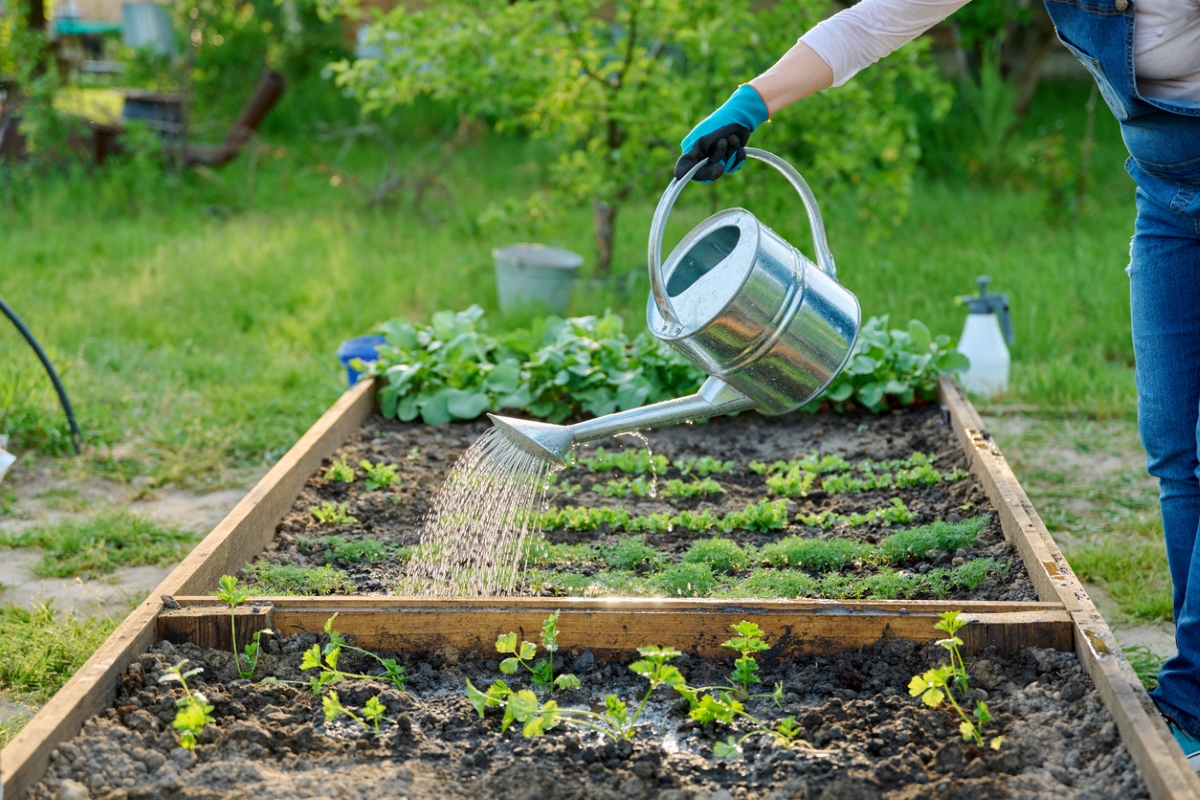
To keep parsnip roots from becoming tough and flavorless, water the plants if there’s less than 1 inch of rain per week. Like carrots, they like a lot of water, but too much water or standing water leads to hairy roots or “forking.”
Consistency is key. Fluctuations in the amount of water they receive can result in cracking of roots, slow leaf growth, or bitterness. Mulch to retain moisture and consider drip irrigation for steady watering.
Fluctuations in watering can cause root cracking, other root disorders, slow leaf growth, and a bitter flavor.
Fertilizing Parsnips
If the soil is good, fertilizing is probably not necessary, but fertilizing them the same way carrots are fertilized can be helpful: once in the spring after seedlings emerge and again in the summer, or about four weeks later, as their roots are developing.
The best application is side dressing—applying fertilizer on the soil along the plant row to target the roots. Caution: Too much nitrogen will focus growth on foliage instead of roots.
Safety Considerations
There are a number of types of wild parsnip with varying degrees of toxicity—from rash to death—so it’s best to stay away from any non-cultivated parsnip you encounter. Even drinking water in which they’re growing can prove toxic.
For some folks, even the varieties grown in gardens can produce allergic reactions such as a rash similar to that caused by poison ivy. Both the sap and the leaves can irritate the skin, cause a blistering rash, or discolor the skin.
Potential Pests and Diseases
Parsnips aren’t susceptible to many pests or diseases, but can succumb to aphids, carrot rust fly, leaf miners, and cutworm—although proper spacing can alleviate some of the risk. Crop rotation, row covers, and parsnip companion plants such as chives or alliums might prevent rust flies. Planting marigolds nearby can discourage cutworm.
Conversely, don’t plant parsnips near plants that attract leafhoppers, such as clover and alfalfa.
Parsnip canker is caused by fungus and can often be avoided by preventing soggy soil.
Harvesting Parsnips
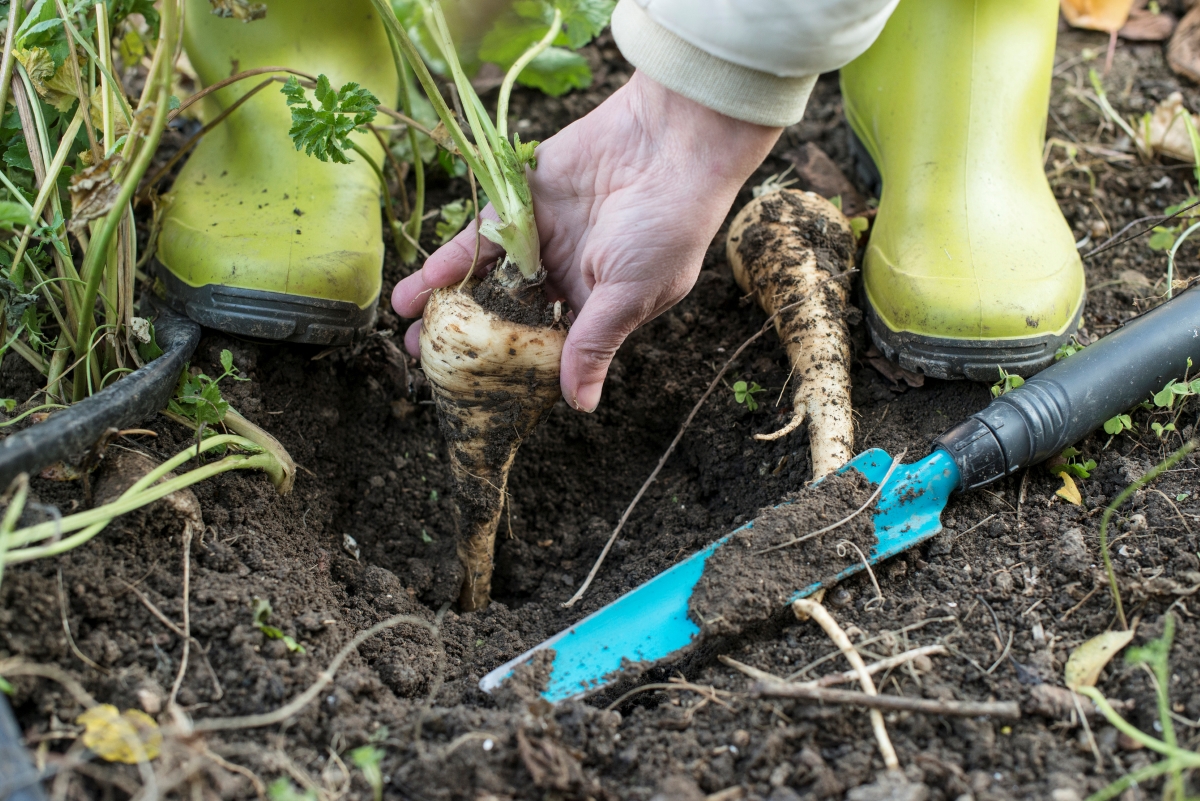
Most varieties of parsnips take 120 to 180 days to mature. One sign they’re ready to harvest is when the foliage reaches 3 feet tall. Roots should be about 1 inch in diameter.
When is the best time to harvest parsnips?
With their long growing season, parsnips aren’t ready to harvest until late autumn. While there’s a rush to bring in most crops before the first frost, not only can parsnips handle a light freeze, but they’ll actually benefit from it. When the roots are exposed to temperatures under 40 degrees Fahrenheit, they become sweeter.
They should be pulled before the ground freezes. Alternatively, they can be left until early spring, harvested as soon as the ground thaws.
How do you harvest parsnips?
Harvesting parsnips is simple and done much the same as harvesting carrots. It’s best to wear gloves when harvesting parsnips because the foliage can cause skin irritation on contact.
- Use a digging fork to loosen the soil around them.
- Grab them where the green tops meet the top of the root and pull straight up.
- Remove the foliage from the roots.
How do you store parsnips?
You can “store” parsnips in the ground by leaving them in the garden until the ground freezes. After that, starchy roots like parsnips are best stored between 32 and 40 degrees Fahrenheit with 90 to 95 percent humidity. This can be achieved short-term in the refrigerator (about 2 weeks) or long-term (as long as 6 months) in a root cellar, unheated basement, garage, or other cool, dark place—preferably in moist sand. Wherever they’re kept, they shouldn’t be near apples and other fruits, which turn the parsnips’ taste bitter.
Looking for more root vegetables? Check out our guides on growing beets, radishes, and potatoes.

